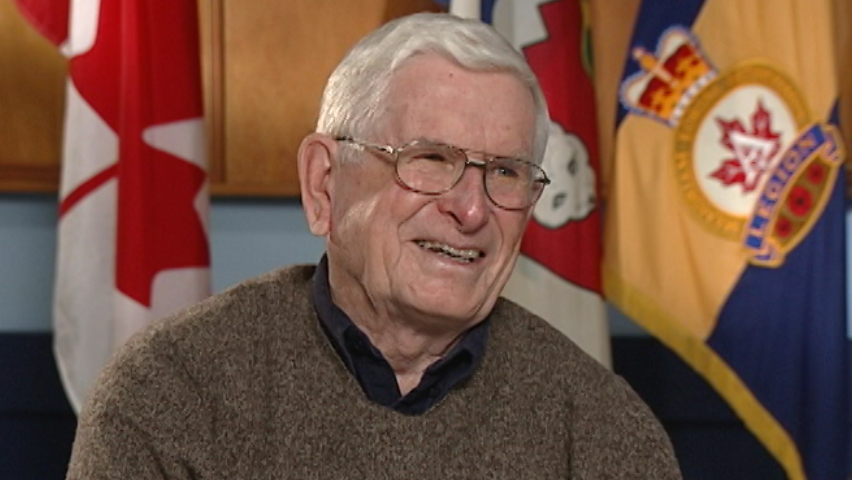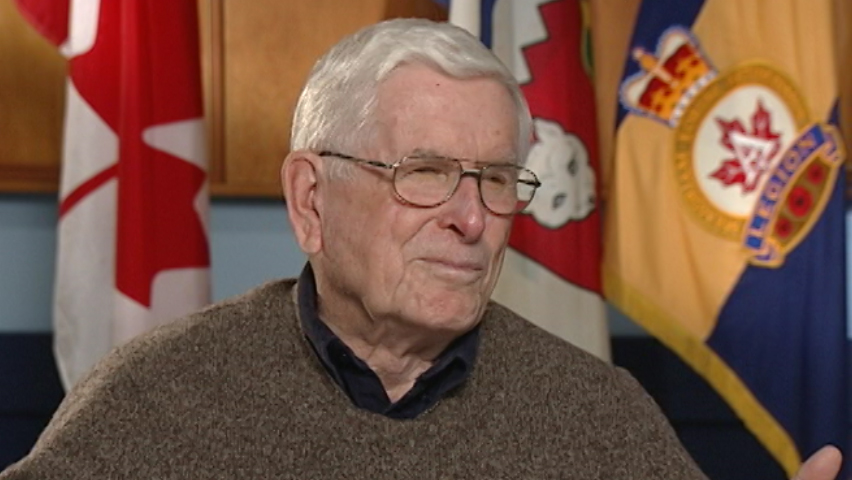Fighting a war
Heroes Remember
Fighting a war
Transcript
There's somebody on the other side of that door there with a
machine gun you know, you're trying to, you're trying to get into
that house, that's all there is to it. I mean that's it so...
They're throwing grenades and I mean despite all the American
movies, you don't want to believe that kinda stuff. That isn't,
maybe that's the way they do, but I, wasn't the way we did it.
Interviewer: So tell me how it went, step by step.
How did you, what did you folks experience?
Well, the day before, the day before I was wounded,
we had to advance across an open field. It was maybe a quarter,
quarter of a mile or something. Advance across this open field.
It was just being, they were just mortaring the shit out of it,
the Germans were. These what they called moaning minnies,
they were sixteen mortars, I think it was, mortar shells that
came over in a bunch and you could hear them coming.
You know, well it's hard to describe how they sound, but you
could hear these things coming. And it's like anything like that,
you swear it's gonna hit you right on the back of the neck or
something, you know. Of course you're, you're on the ground
really, you're crawling up that friggin' field, that's all there
is to it. But you get up and run, but you run from here over to
that camera and down again, you know. We were going in under a,
a creeping barrage they were using anti-aircraft guns and they
were, instead of pointing them in the sky they were running
them horizontal. And using air bursts and they'd have these
air burst shells, you know, they had put timers in them.
So they were always just ahead of us, exploding,
these air bursts but they were going, you know, and just steady
those anti-aircraft shells going on. We were going in under that.
The mortars were coming from the other side.
There were machine guns, there was eighty-eights,
what's it called, there's German artillery eighty-eights.
You couldn't hear an eighty-eight shell coming it was faster
than the speed of sound so they... when the eighty-eight shell
when it landed, then you heard it coming afterwards, you know.
And we're all, we were trying, we were to get to a bunch of some
houses. We got there, and stayed, we were there overnight
and we took them. One of the things you can, one of the things
you can tell who are fighting troops, and who are, are ones
performing for the camera. The fighting troops are all carrying
a shovel. Your shovel was your best thing. You could throw
everything else away, but you kept your shovel.
Well, because every time, I mean, every time you stopped,
every time you stopped, you dug a hole.
Description
Mr. Carter talks going ‘house to house combat' and what it was like to go through a field with heavy fighting.
Gordon Carter
Mr. Carter was born in 1924, and grew up on a farm 30 miles outside of Sault Ste. Marie, Ontario. He joined the Canadian Army in 1943. While in combat in Holland, he was wounded and was not expected to recover from his wounds. Mr. Carter tells us what it was like to be at war and what happened the day he was shot by a sniper.
Meta Data
- Medium:
- Video
- Owner:
- Veterans Affairs Canada
- Duration:
- 03:42
- Person Interviewed:
- Gordon Carter
- War, Conflict or Mission:
- Second World War
- Location/Theatre:
- Holland/Netherlands
- Branch:
- Army
- Rank:
- Private
- Occupation:
- Driver
Related Videos
- Date modified:





